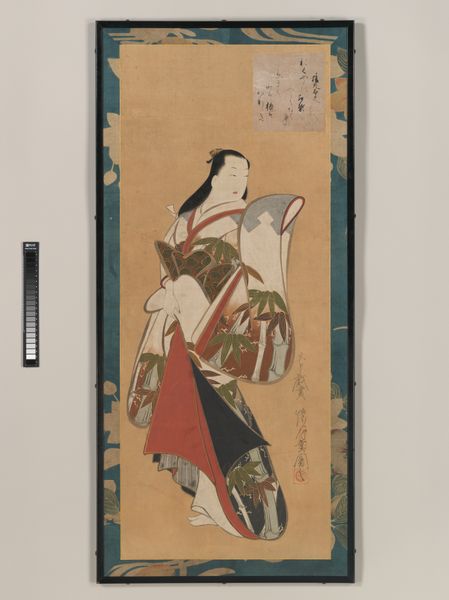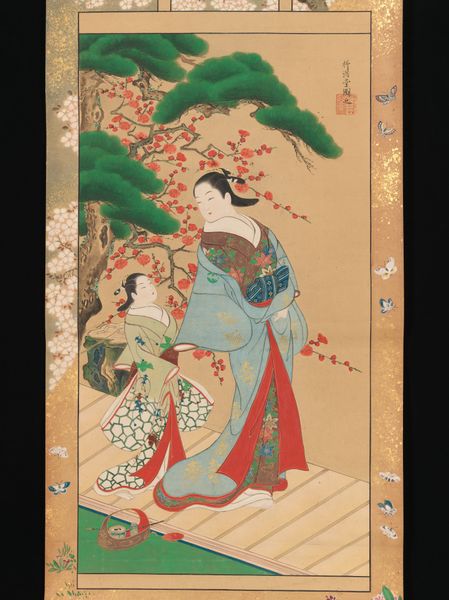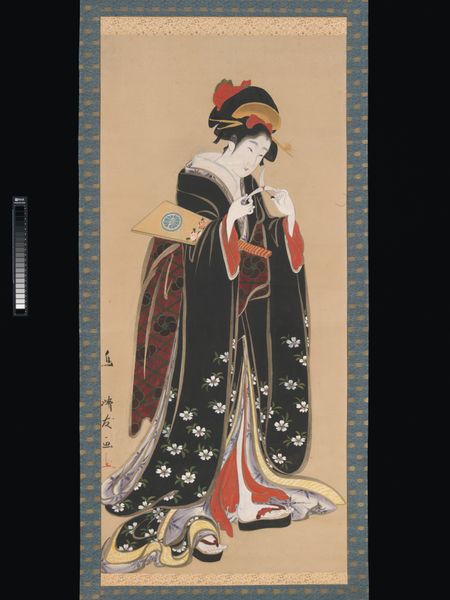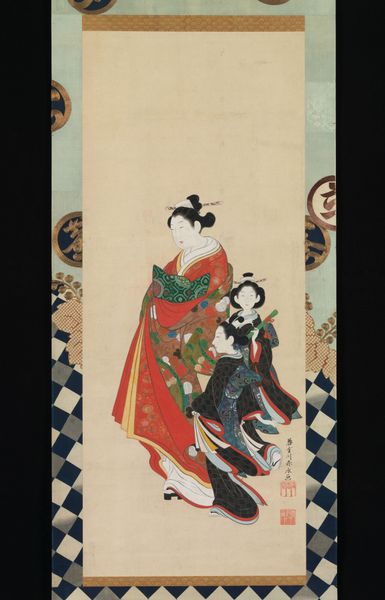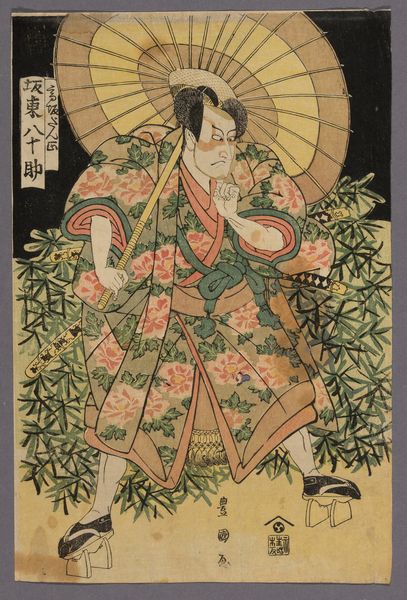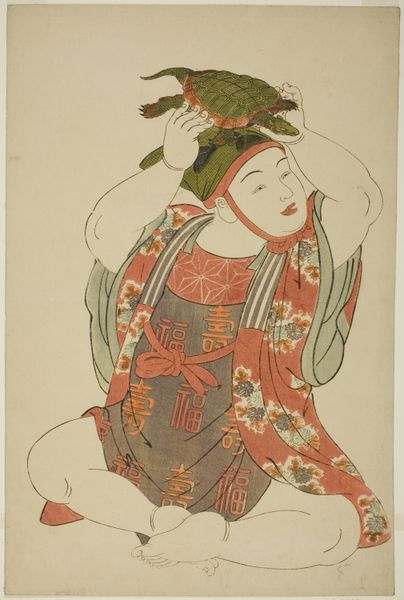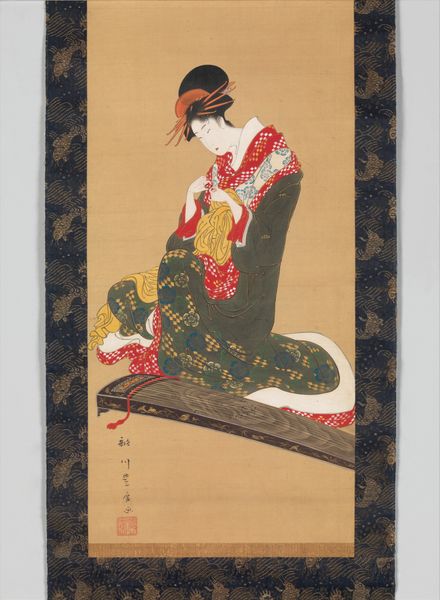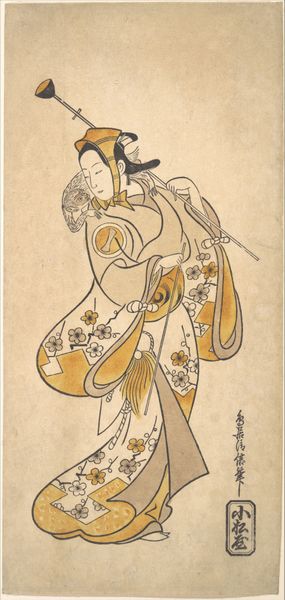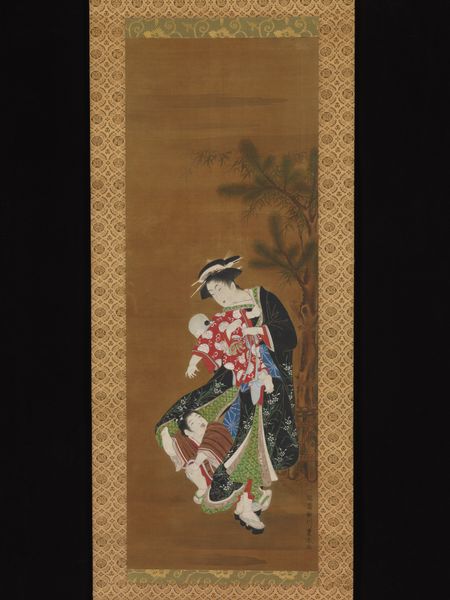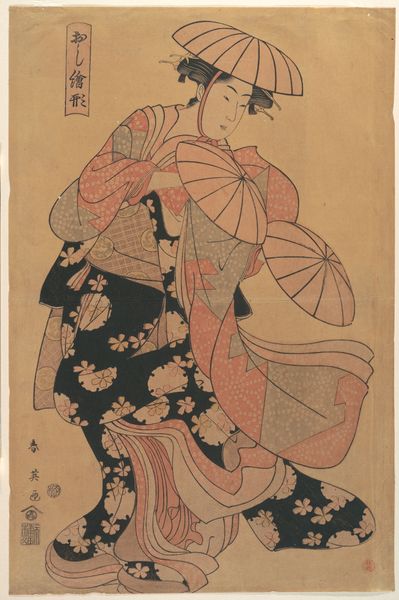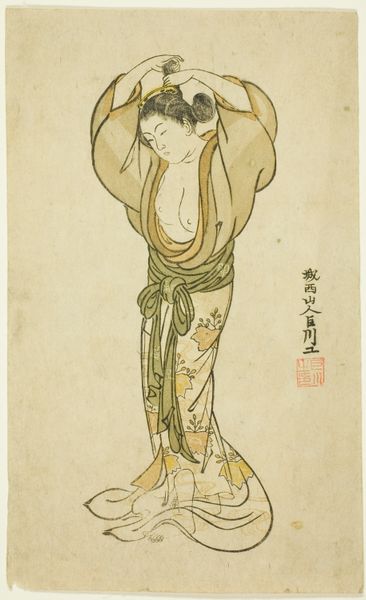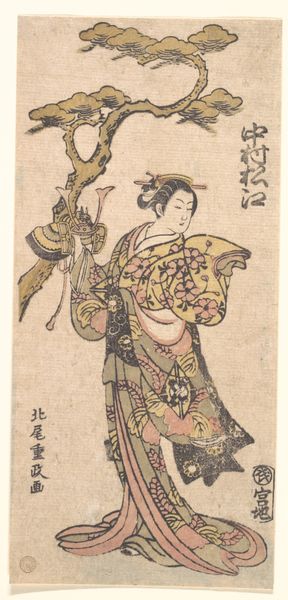
Dimensions: H. 25.1 cm (9 7/8 in.); base diam. 12 cm (4 3/4 in.)
Copyright: Public Domain
Curator: This delightful porcelain figurine, crafted by the Derby Porcelain Manufactory between 1770 and 1780, is entitled "Allegorical Figure of Europe." You can find it here at the Art Institute of Chicago. Editor: It strikes me as a bizarre sort of Rococo pastiche – like someone decided to cram every conceivable symbol into one piece. The scale feels off too; there’s something unsettling in the proportions. Curator: Indeed. Structurally, notice the spiraling composition – the figure rises from a mound adorned with various objects: books, a helmet, flowers… a rather chaotic base from which the central figure emerges. And consider the glaze—exceptionally smooth, enhancing the delicacy of the porcelain. Editor: The helmet and books, though miniature, clearly refer to military prowess and learning, foundational elements attributed to Europe. What do you make of the figure herself, with the orb and the crown? To me, she is referencing governance but also a cultural memory. Curator: Precisely. The orb represents dominion and power, further reinforced by the crown—emblems of sovereignty and influence. And from a formal perspective, her upward gesture leads the eye to consider the implied space above her – creating a dynamic visual tension. Note also the color palette—soft pastels balanced by rich gold accents. Editor: Yet the florals undermine any serious message of power with excessive prettification. Rococo often flirted with these symbolic dissonances to indicate Europe as opulent but delicate. That visual tension that you have identified becomes more legible as she seems to almost shrug off her regal symbolism. Curator: An interesting point. One could further decode the figure's dress, adorned with floral patterns, reflecting the Rococo’s fascination with the natural world, integrated into an allegorical framework. These decorative elements carry intrinsic value – shaping our interpretation, even overwhelming potential messages of state and domination. Editor: Right – so we must see these individual elements – floral patterns, crowns – as constituents in this allegory, less potent alone, more relevant as visual reminders that form the totality of what is, essentially, a portrait of idealized Europe in the late eighteenth century. Curator: Well said. Reflecting on our brief exploration, I see the effectiveness of combining careful scrutiny of materials and composition alongside sensitivity to inherited meanings and social codes to allow access into understanding such an elaborate objet d’art. Editor: Ultimately, appreciating an artwork involves negotiating our immediate visual experience and being historically informed of what past symbolisms communicate in the present.
Comments
No comments
Be the first to comment and join the conversation on the ultimate creative platform.
